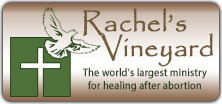HISTORY: A Communion of Saints Not A Competition
In the summer of 2015 Xavier University of Louisiana, XULA, under the leadership of the university’s president, Dr. Norman Francis, hosted the very first “Symposium of the Saints”. It offered a lecture series married to a prayerful day of reflection on all the American sainthood candidates that are of African ancestry. Dr. Pamela Franco, interim director of the Institute for Black Catholic Studies of XULA, facilitated the planning, offered live streaming and the published the proceedings of all lectures given at the event.
The most prominent question that arose from the event: “Why do the various Causes appear to be in competition of one another?”; and after giving birth to the inaugural sainthood symposium idea, the Rev. Canon, A. Gerard Jordan, O. Praem. proposed that prayerful days of reflection around the country be held to promote unity in this manner so that all may come to know and remember that it is a communion of saints that we hope to achieve. Jordan was motivated to consult with the Black and Indian Missions Office, the Sisters of the Blessed Sacrament and the Tekakwitha Conference, and on September 9, 2016 he submitted a proposal to, His Excellency, the Most Rev. Joseph N. Perry, JCL, DD. His pitch was also heard by individual Causes, and due to collaborative efforts with the current president of XULA, Dr. C. Reynolds Verret, the plan began to take shape in order to establish a joint resource center for the purpose of producing scholarly work that would focus on the black candidates for sainthood in the Roman Catholic Church in America, while also highlighting the efforts of their individual independent cause.
This joint effort, pooling together the guilds attached to the causes: Pierre Toussaint (New York), Henriette DeLille (New Orleans), Mary Elizabeth Lange (Baltimore), Augustus Tolton (Chicago), Julia Greeley (Denver) and Thea Bowman (Mississippi) would be the first of its kind. The need for such a reality presented itself due to the fact that there are no African-Americans raised to the dignity and sanctity of the communion of saints in the universal Church. Therefore there is also no cult of saints that exist. When fully operational, the Center will be a repository of scholarly information on each candidate for use by religious, scholars, and volunteers. Thus, the Center will provide accurate and sanctioned materials for persons, groups, dioceses, and institutions for use in the canonization processes and promotion of all five of the candidates and any future candidates.
An ad hoc team consisting of a representative from each of the respective guilds from around the country was invited to meet on January 5, 2017 in Slidell, Louisiana to agree on the detail that would help to shape what the joint resource center’s secondary goals would be. As a part of the vision and mission of the center they plan to include the proliferation of the canonization prayer of any Black candidate for sainthood, overall basic education, the correction of mis-information being circulated and catechesis for the Christian faithful, while evangelizing the unchurched in the new entity’s work.
On February 27, 2018, Xavier University of New Orleans was asked to house this new initiative; and after some dialogue with the University’s Board of Directors, the President and the Provost we were given a favorable response that XULA, in cooperation with the Institute for Black Catholic Studies would have XULA to call home but had to find funding and be self-staining in their initial setup and on-going programs of the center.
Various press releases, news coverage and social media attention were experienced at summer’s end, announcing the unique initiative in the black Catholic community regarding the new joint resource center. On July 31, 2018 the official announcement was made in the university chapel telling the nation of the efforts. The Xavier University Center for the Saints was born. There was a captive audience for this announcement, in that it was the 50th anniversary of the National Black Catholic Clergy Caucus. The president of XULA, and several African American Catholic associations, i.e. sisters, seminarians, deacons and their wives, were also on hand for the announcement.
It is the hope of all involved to advance further research, produce scholarly works, catechetical and devotional materials on each of the candidates. Public support of the efforts in spreading the stories of these heroic servants for the eventual raising to the altar of their names and intercession are paramount according to Bishop Perry. Finally, the center will also incorporate the stories of the two Saints, Katharine Drexel and Kateri Tekakwitha. Days of reflections on the spirituality of these holy men and women are being held around the country to affect their causes.
HOLY MEN AND WOMEN
Pierre Toussaint (1766-1853) Pierre Toussaint was born a slave in Haiti and died a freeman in New York City. He is credited by many with being the father of Catholic Charities in New York. Pierre was instrumental in raising funds for the first Catholic orphanage and began the city’s first school for black children. He also helped to provide funds for the Oblate Sisters of Providence, a religious community of black nuns founded in Baltimore and played a vital role in providing resources to erect Old Saint Patrick’s Cathedral in Lower Manhattan. During a Yellow Fever epidemic when many of the city’s political leaders fled the city in search of healthier rural climates, Pierre Toussaint cared for the sick and the dying. He was a successful entrepreneur, who did not hesitate to share the fruits of his labor with others.
Pierre Toussaint was born a slave in Haiti and died a freeman in New York City. He is credited by many with being the father of Catholic Charities in New York. Pierre was instrumental in raising funds for the first Catholic orphanage and began the city’s first school for black children. He also helped to provide funds for the Oblate Sisters of Providence, a religious community of black nuns founded in Baltimore and played a vital role in providing resources to erect Old Saint Patrick’s Cathedral in Lower Manhattan. During a Yellow Fever epidemic when many of the city’s political leaders fled the city in search of healthier rural climates, Pierre Toussaint cared for the sick and the dying. He was a successful entrepreneur, who did not hesitate to share the fruits of his labor with others.
In recognition of Pierre Toussaint’s virtuous life, the late Cardinal Cooke introduced Pierre’s cause for canonization at the Vatican in 1968. In December 1989, the late Cardinal O’Connor had the remains of Pierre Toussaint transferred from Lower Manhattan to St. Patrick’s Cathedral in midtown Manhattan where he is buried as the only lay person, alongside the former Cardinal-Archbishops of New York City. On December 17, 1997, Pope John Paul II declared Pierre Toussaint, “Venerable,”. Venerable Pierre Toussaint was a man who was proud of his faith, proud of his culture and committed to service.
Reference Excerpted from: http://www.obmny.org/VenerablePT.htm
Elizabeth Clarisse Lange (1784-1882) We do not know very much about Elizabeth Lange’s early life. Recent research points to Santiago de Cuba as her birthplace. By 1813 she was living in Baltimore and used her own money and home to educate children of color. Elizabeth, with a friend, Marie Magdelaine Balas, offered free education to children in their home in the Fells Point area of the city. Early in 1828 Providence intervened through the person of Reverend James Hector Joubert, S.S. who, encouraged by Archbishop James Whitfield, presented Elizabeth Lange with the challenge to start a school for girls of color. On July 2, 1829, Elizabeth and three other women pronounced promises of poverty, chastity, and obedience to Archbishop Whitfield and the chosen superior. Elizabeth, is considered the founder and first superior of the Oblate Sisters of Providence, henceforth was known as Sister Mary. She was superior general from 1829 to 1832, and again from 1835 to 1841.
We do not know very much about Elizabeth Lange’s early life. Recent research points to Santiago de Cuba as her birthplace. By 1813 she was living in Baltimore and used her own money and home to educate children of color. Elizabeth, with a friend, Marie Magdelaine Balas, offered free education to children in their home in the Fells Point area of the city. Early in 1828 Providence intervened through the person of Reverend James Hector Joubert, S.S. who, encouraged by Archbishop James Whitfield, presented Elizabeth Lange with the challenge to start a school for girls of color. On July 2, 1829, Elizabeth and three other women pronounced promises of poverty, chastity, and obedience to Archbishop Whitfield and the chosen superior. Elizabeth, is considered the founder and first superior of the Oblate Sisters of Providence, henceforth was known as Sister Mary. She was superior general from 1829 to 1832, and again from 1835 to 1841.
When considering the works of Mother Mary Lange and her sisters also established an orphanage, a widow’s home, provided spiritual direction, religious education classes and vocational training. The early Sisters did home visiting and conducted night schools so black adults could learn to read and write. She helped to nurse the sick during the Cholera Epidemic in the early 1830’s and in the mid 1840’s. Lange died February 3, 1882. In 1991 William Cardinal Keeler, the then Archbishop of Baltimore, with the approval of Rome, officially opened the cause for her canonization.
Reference Excerpted from: http://motherlangeguild.homestead.com/biography.html
Henriette Delille (1812 – 1862) Born in 1812, Henriette Delille, was a free woman of color. Her maternal roots are traced back to her great, great grandmother who was a slave from West Africa. Henriette Delille was born in New Orleans, Louisiana in 1813. Her white father was born in France. Her mother, a free quadroon, was a Creole. Their union was a common-law marriage typical of the contemporary plaçage system. When Henriette was 24 years old, she underwent a religious experience. In 1836 Henriette drew up the rules and regulations for devout Christian women, which would eventually become the Society of the Holy Family, founded in 1842. The group was founded for the purpose of nursing the sick, caring for the poor, and instructing the uneducated. They took into their home elderly women who needed more than visitation, and thereby opened America's first Catholic home for the elderly of its kind. Noteworthy are the heroic efforts of the early Sisters who cared for the sick and the dying during the yellow fever epidemics that struck New Orleans. Henriette Delille died on November 17, 1862.
Born in 1812, Henriette Delille, was a free woman of color. Her maternal roots are traced back to her great, great grandmother who was a slave from West Africa. Henriette Delille was born in New Orleans, Louisiana in 1813. Her white father was born in France. Her mother, a free quadroon, was a Creole. Their union was a common-law marriage typical of the contemporary plaçage system. When Henriette was 24 years old, she underwent a religious experience. In 1836 Henriette drew up the rules and regulations for devout Christian women, which would eventually become the Society of the Holy Family, founded in 1842. The group was founded for the purpose of nursing the sick, caring for the poor, and instructing the uneducated. They took into their home elderly women who needed more than visitation, and thereby opened America's first Catholic home for the elderly of its kind. Noteworthy are the heroic efforts of the early Sisters who cared for the sick and the dying during the yellow fever epidemics that struck New Orleans. Henriette Delille died on November 17, 1862.
Venerable Henriette Delille is the first United States native born African American whose cause for canonization has been officially opened by the Catholic Church. Venerable Henriette Delille lived her prayer: "I believe in God. I hope in God. I love. I want to live and die for God."
Reference Excerpted from: http://www.sistersoftheholyfamily.com/AboutHenrietteDelille.html
Augustus Tolton (1854-1897) Augustus Tolton was the first recognizable African-American priest in the Catholic Church. Ordained in Rome in 1886, Tolton, a son of slaves, was the first black priest to identify with the African American community and to address the subtle particulars of 19th century race prejudice found in society and in the Church. Born a slave in 1854 in Brush Creek, he and his family fled along the Underground Railroad to freedom and lived in Quincy, Illinois. In an answer to his vocation to the priesthood and after repeated unsuccessful applications over seven years to several different US seminaries only to receive no answer or a decline to admit a black student, the Franciscan Fathers finally were able to maneuver his acceptance into the Propaganda Fide seminary and college in Rome.
Augustus Tolton was the first recognizable African-American priest in the Catholic Church. Ordained in Rome in 1886, Tolton, a son of slaves, was the first black priest to identify with the African American community and to address the subtle particulars of 19th century race prejudice found in society and in the Church. Born a slave in 1854 in Brush Creek, he and his family fled along the Underground Railroad to freedom and lived in Quincy, Illinois. In an answer to his vocation to the priesthood and after repeated unsuccessful applications over seven years to several different US seminaries only to receive no answer or a decline to admit a black student, the Franciscan Fathers finally were able to maneuver his acceptance into the Propaganda Fide seminary and college in Rome.
After his ordination, 24 April 1886, he returned to Quincy but only for three years. Then he was forced to travel to Chicago where he took a fledgling group of black Catholics and advanced them to their own parish (St. Monica’s), and where in 1891 he began construction of a church. By the time of his untimely death in 1897, at the age of 43, due to heat-stroke during an exceptional heat-wave that hit the city and killed almost a hundred people, Tolton had established himself as a leader among black Catholics in Chicago and in the United States. He is a pioneer, an apostle of charity and inclusion, a symbol of the universality of the Church, one who easily elicits our sympathy but one who reminds us of the courage we have within our hearts to continue to work for racial and ethnic solidarity while eradicating all forms of hesitancy and intolerance.
Reference Excerpted from a biography written by: Bishop Joseph N. Perry, J.C.L, D.D.
Julia Greeley (ca. 1833-48 – 1918) Julia Greeley, was an aged woman who died in poverty in the Sacred Heart Parish, but who is declared by the Jesuit Fathers of that church to have been the most zealous apostle of the Sacred Heart they have ever known. She has the distinction of being the only simple Catholic layman in the history of Denver whose dead body lay in state in a Catholic church.
Julia Greeley, was an aged woman who died in poverty in the Sacred Heart Parish, but who is declared by the Jesuit Fathers of that church to have been the most zealous apostle of the Sacred Heart they have ever known. She has the distinction of being the only simple Catholic layman in the history of Denver whose dead body lay in state in a Catholic church.
She was hired by the wife of the Governor of Colorado to be there domestic help. She was daily communicant at the old Cathedra. She was constantly visiting the poor and giving them assistance from her own slender means. When she found their needs so great that she could not help them with her own goods, she begged for them. She realized that white people, no matter how poor, might feel a little sensitive in receiving assistance from an old colored woman, so she went at night to their homes to deliver the goods she had begged, in order to keep the neighbors from seeing her. She had even been seen going thru the streets at night with a mattress on her back. Many and many a times she was seen carrying coal and groceries. Yet she was so poor herself that the city charity department had been furnishing her with fuel and groceries. On one occasion, a priest of the Sacred Heart parish found her pushing a baby carriage along at night. She loved children and was always willing to look after the babies. When her body lay in state, the poor, the rich in limousines and giant touring cars of the public came carrying the rich to see her. She was buried in the finest plot procurable in Mount Olivet cemetery. Her cause was opened in recent years and her body transferred to the cathedral.
Reference Excerpted from a biography http://juliagreeley.org/index.php/obituary/
Thea Bowman (1937 – 1999)
 Thea Bowman was born in 1937 and reared in Canton, Mississippi. As a child she converted to Catholicism and went on at the age of fifteen to tell her parents and friends she wanted to join the Franciscan Sisters of Perpetual Adoration. Sister Thea to rediscover her African-American religious heritage and spirituality and to enter her beloved Church “fully functioning.” In 1984, Sister Thea faced devastating challenges: both her parents died, and she was diagnosed with breast cancer. Her friends and students encouraged her to choose life. Sister Thea vowed to “live until I die” and continued her rigorous schedule of speaking engagements.
Thea Bowman was born in 1937 and reared in Canton, Mississippi. As a child she converted to Catholicism and went on at the age of fifteen to tell her parents and friends she wanted to join the Franciscan Sisters of Perpetual Adoration. Sister Thea to rediscover her African-American religious heritage and spirituality and to enter her beloved Church “fully functioning.” In 1984, Sister Thea faced devastating challenges: both her parents died, and she was diagnosed with breast cancer. Her friends and students encouraged her to choose life. Sister Thea vowed to “live until I die” and continued her rigorous schedule of speaking engagements.
Today across the United States there are schools; an education foundation to assist needy students attend Catholic universities; housing units for the poor and elderly, and a health clinic for the marginalized that are named in her honor. Books, articles, catechetical resources, visual media productions, and a stage play have been written or created documenting her exemplary life, spirituality, and ministry; prayer cards, works of art, statues, and stained-glass windows bear her image all attesting to Sister Thea’s profound spiritual impact and example of holiness for the faithful.
Reference Excerpted from a biography http://sistertheabowman.com/biography/
















